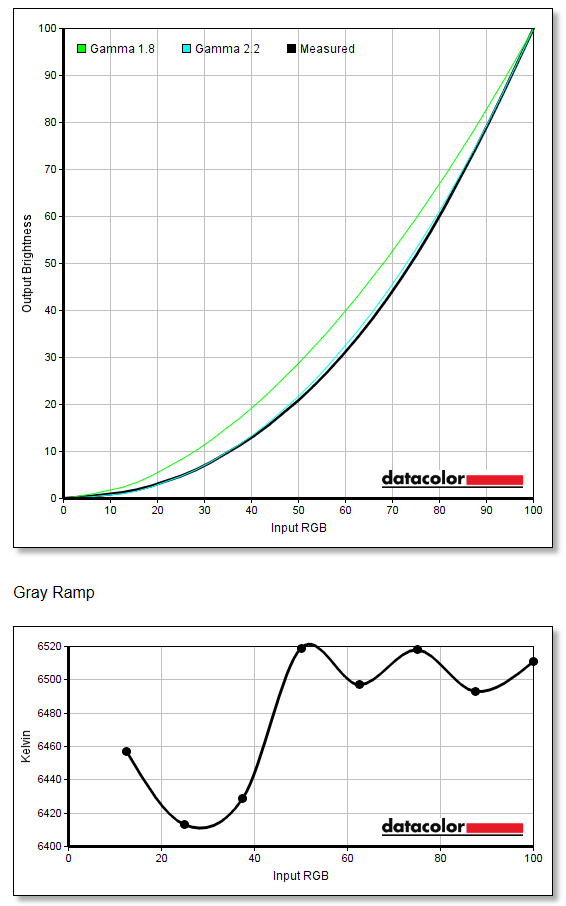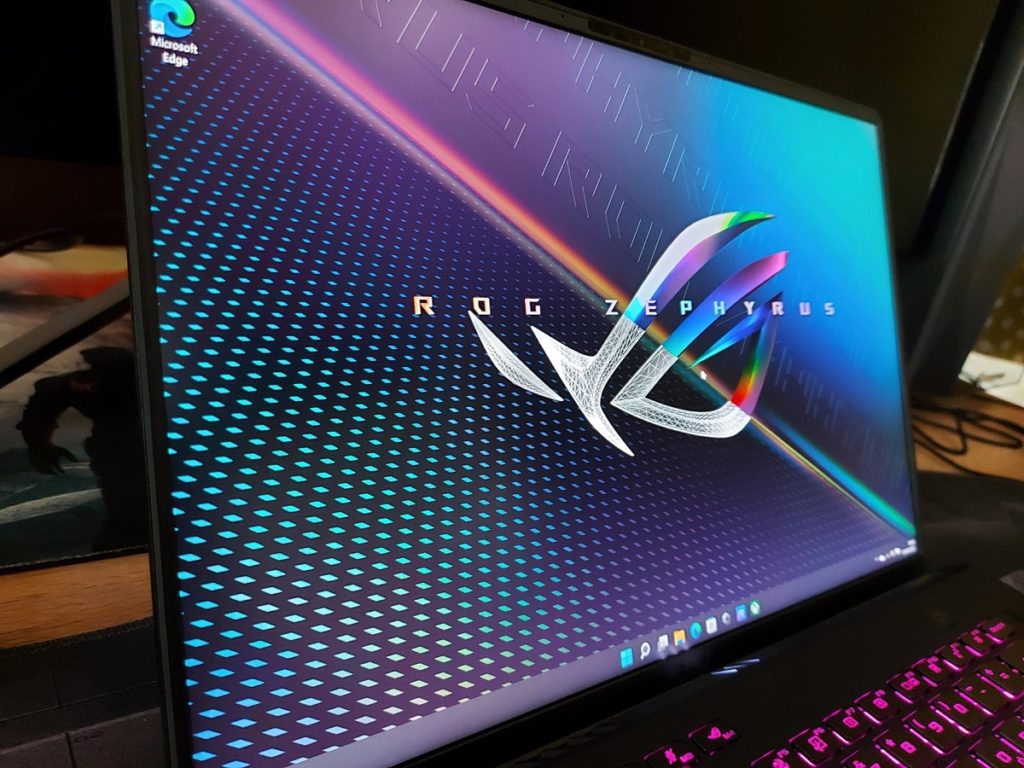ASUS ROG Zephyrus M16: Display and Audio
Display
The Zephyrus M16 retains the same panel as before, and I’m more than happy to see the return of the outstanding 2560×1600 display with its 165Hz refresh rate. In this configuration, you can comfortably clear the 60 fps barrier at native resolution, and competitive or less graphically intensive games can make good use of the extra Hz available.
Gamut coverage is exceptional: sRGB coverage is 99.9% with 149.1% volume, AdobeRGB coverage is 85.5% with a volume of 102.7%, and DCI-P3 is 99.2% with 105.6% volume.

Peak brightness was recorded at 481.5 cd/m², with a black level of 0.43 cd/m². The brightness is above average for a laptop display, but the black level is relatively high. Somewhat surprisingly, the results were significantly different to the 2021 M16; I’m not sure if this is an updated panel or just the luck of the draw, but the 2022 M16 we tested has better brightness, better contrast (1120:1 at peak brightness) and a more accurately calibrated colour temperature. The older panel was already very good, but this one is fantastic.

The native gamma of the Zephyrus M16 is slightly below the 2.2 curve, measuring 2.3. This gives mid-tones that are slightly darker in tone compared to my calibration.

Out of the box colour accuracy is phenomenally good. With an average DeltaE of 0.29 using the pre-installed display profile, this is one of the most accurate displays I’ve come across.
After calibration, DeltaE 76 was only reduced to 0.27, but the gamma followed the 2.2 curve exactly. Using my calibration equipment, you can switch to a before and after view so you can see the differences it has made – in this case, the colours didn’t change at all, with the only difference being a slight lightening of the gamma. For colour critical work this is an exceptional result, but it also means games and movies look their absolute best, too.
The quoted maximum viewing angle is 86°, which seemed to match my real-world experience. Viewing front-on there’s no notable shift in colour or contrast towards the corners of the display, but there is noticeable contrast and colour shift at more extreme angles. As long as you stay relatively centred in front of the screen you will have no issues.

Panel uniformity is good, with only minor deviations which are most pronounced towards the lower left of the display. These are very minor variations, of course, and without physically measuring the display I wouldn’t have noticed.

The responsiveness of the panel is superb, with almost no visible motion blur, and no artefacts or overshoot when using the 3ms panel overdrive. Games look crisp and sharp, and scrolling through text is ridiculously smooth and exceptionally clear. Top marks for ASUS, as this is a very, very nice display.
Audio
The six-speaker Dolby Atmos arrangement in the Zephyrus M16 is excellent. Peak volume is sufficient to fill a moderately sized room, and the sound it produces has depth and warmth, with a surprising amount of spaciousness. Bass is rich and full, with no muddiness at louder volumes, and it’s complemented by well-balanced mid and high tones.
When I write about good laptop or notebook speakers, I often have to append my statement with, “good, for a laptop”, but this is a genuinely impressive sound setup that doesn’t have that hollowness or overly high-pitched harshness you often get from smaller speakers. I don’t think it would ever replace my audiophile bookshelf speakers at home, but on the go, it’s a very welcome addition to the M16.

